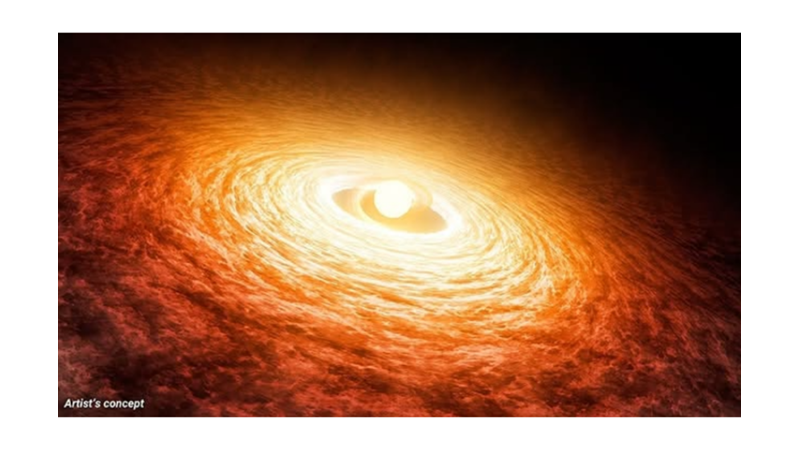Hubble has revealed sizzling new details about the young star FU Orionis.
In 1936 astronomers saw an astonishing phenomenon in the constellation Orion: the young star became a hundred times brighter in a matter of months. Unlike an exploding star, its brightness has diminished very little since then.
Astronomers used Hubble's unique ultraviolet capabilities to study the interaction between the star's surface and the accretion disk of matter that surrounds it, which has been discharging gas onto the growing star for nearly 90 years.
They found that the inner disk in contact with the star is much hotter than expected - almost three times hotter than the surface temperature of the Sun!
This discovery challenges conventional stellar wisdom.
Image description:
Artist's concept of the early stages of the explosion of the young star FU Orionis. The star, a bright yellow sphere near the center, and its bulging disk of gas and dust have a slight tilt extending from the upper left corner to the lower right corner. The rotating disk is bright yellow near the star and gradually fades to deep orange as it moves toward the edges of the frame. A black, starless background is visible in the upper left and upper right corners.
Art credits: NASA-JPL, Caltech


 Nielawore
Nielawore









Yorumlar
nice
So nice!
Yorum yazmak için lütfen giriş yapınız